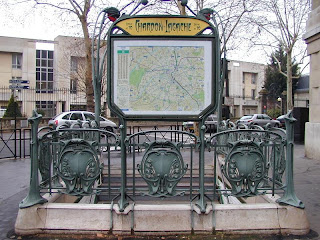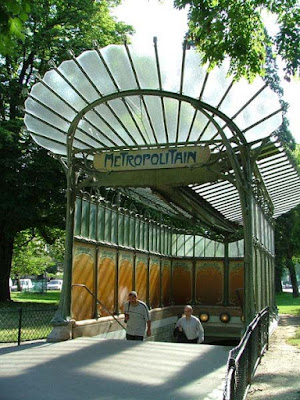The Art Nouveau period became a prominent architectural style in the 1890’s to the 1910’s. The movement started in Belgium particularly in Brussels area, which later spread throughout Europe. Although Art Nouveau was replaced by 20th-century modernist styles, it is considered now as an important transition between the historicism of Neoclassicism and modernism. Music, literature, poetry and architecture started to combine symbolism into their fabric during this time period and laid the foundation for modernism. Design detail became a driving force; everything was designed from the ground up to the ceiling, down to the smallest details of window latching and furniture. Influences to the period were the English free style house, the use of iron as an expressive architectural method, and design & theories of Viollet-le-Duc. Three key influential figures of the time period were Henry Van der Velde, Victor Horta, and Hector Guimard. These three designers pushed the field of architecture further, particular what we now know as modern architecture.
Metal Work design by Hector Guimard
Henry Van der Velde is considered one of the main early contributors to Art Nouveau & modern architecture. He was originally trained as a painter and naturally made the transition to architect and designer, mainly focusing on interiors. Velde developed the theory of form and function which is a widely used concept in today’s world of modern architecture. He believed that ornament was not just the “icing on the cake” of a façade or building but it was indistinguishable with structure. Velde believe that ornament completes form and determines form. As seen in his many furniture designs the structure and the ornament are one in the same, the style is the structure; hence the concept of form and function. Many architects of today use this methodology in their designs for example architect Santiago Calatrava.
Integrated chair design by Henry van Velde
Velde’s lectures that he presented at the Les XX in 1894 helped spread and gain notoriety towards the movement of Art Nouveau. Another influential figure of the period that severally pushed Art Nouveau was Victor Horta and his impressive work.
Horta received a Beaux-Arts architectural education, which he used to develop Viollet-le-Duc’s construction rationalism. Horta did the majority of his work for those who had similar beliefs as he did in the way architecture was moving & changing; at this time Art Nouveau was a radical movement. One of these examples is the house he designed for Emile Tassel of Brussels, who was a Free Masson as was Horta. Hotel Tassel's was arguably one of his most popular an influential works of his career and of Art Nouveau. Horta followed & combined Viollet-le-Duc’s principle of exposed metal structures with ornament motifs from French & English decorative arts. Horta spread a veil over the architecture realism dissolving structure into ornament. Horta said, “an imagination world-half mineral, half vegetable- is created, with an air of unreality”. Horta followed the beliefs of Viollet-le-Duc but also believed in the influence of nature as well.
Staircase design by Victor Horta, integrated structure with ornament & the "interior garden" effect with the frescoes on the wall.
Horta Museum originally his home
Another strong influence to the period was that of Hector Guimard. Guimard brought the movement from Belgium and started to develop Art Nouveuo in France, which eventually became the leading area for the movement. Guimard like Horta integrated the new decorative principles into coherent architectural style. Hector Guimard, much like Victor Horta did in some regards believe in the teachings of Viollet-le-Duc but his allegiance to these teachings was much stronger than Horta’s. After seeing Horta’s work Guimard was blown away and immediately revised his plans to be more curvilinear and plastic forms. Examples of Viollet-le-Duc’s influence on Guimard can be seen in the Maison Coilliot in Lille & the School of Sacre Coeur in Paris. Le Duc's influences can be seen in the exposed metal supports on the side of the building and the decorative metal fences.
In the well-known entrances to the Paris Metro, Guimard carred the analogy between metal structure & plant form further than anything found in Horta’s work.
Paris Metro Entry
the School of Sacre Coeur in Paris
All three of these men influenced modern architecture by developing the means of thought process, creative thinking, innovative thinking, symbolism, and artistic means in architecture. The Art Nouveuo was a transitional time period between modernistic and Neo-Classical periods. Architecture made tremendous strides in this short time period, which effected the field for many years to come.










Good integration of all three architects throughout the blog. Nice use of images as well. You twice make the statement Art Nouveau was a transitional style, but only hint at why it bridges between Neoclassicism and Modernism. Much stronger than your first blog.
ReplyDelete